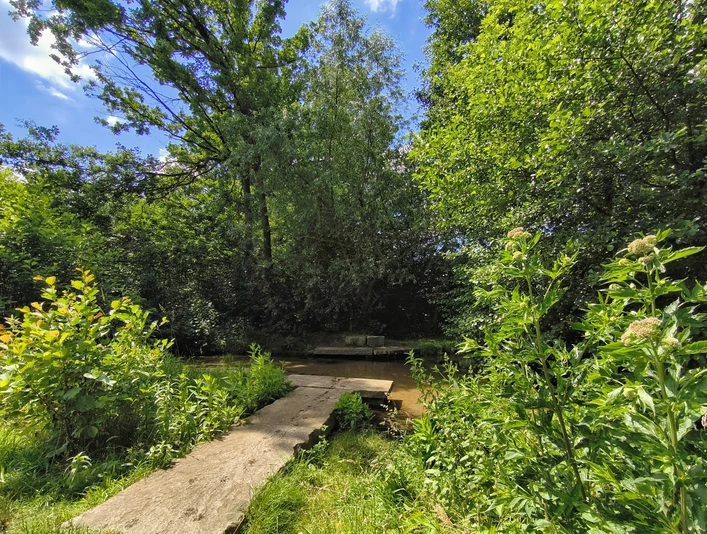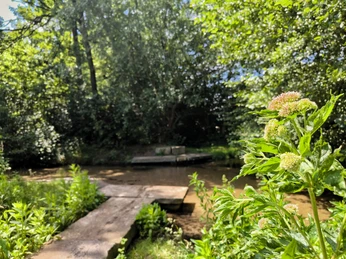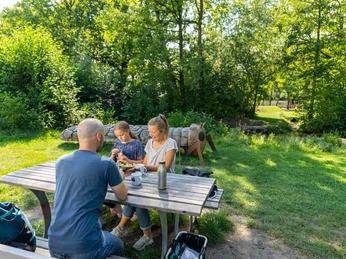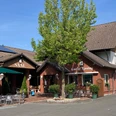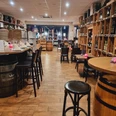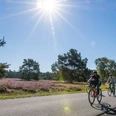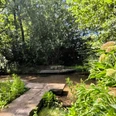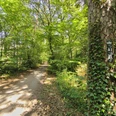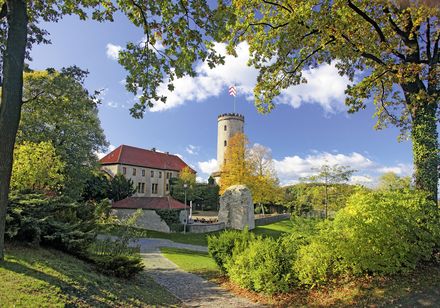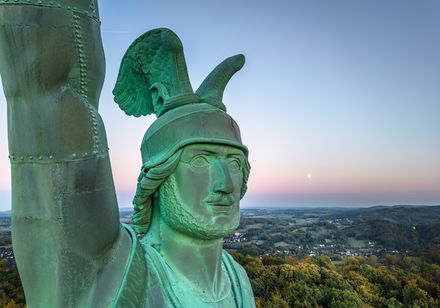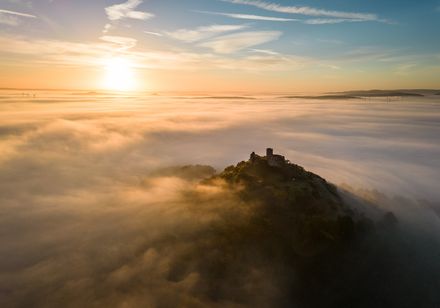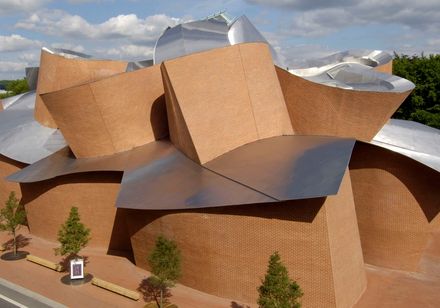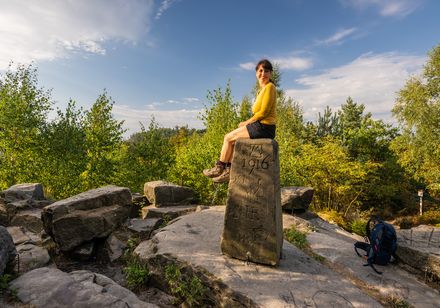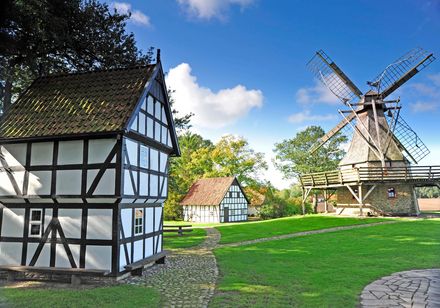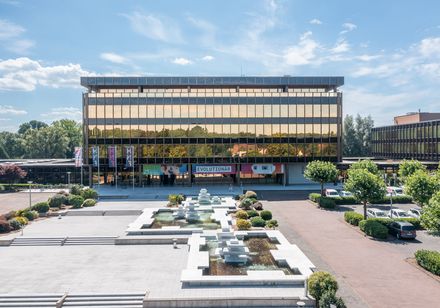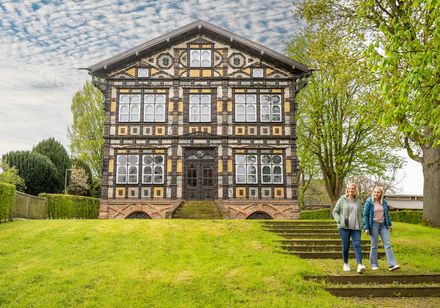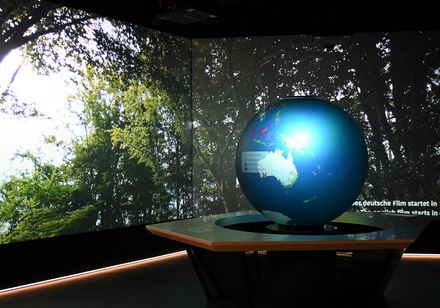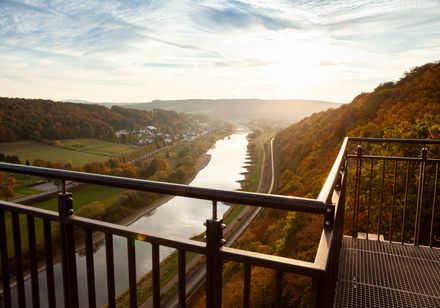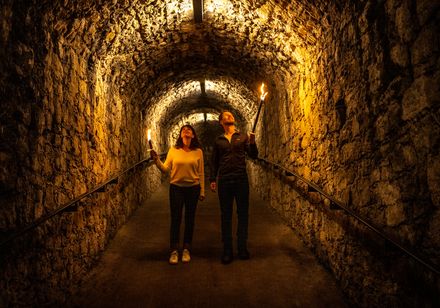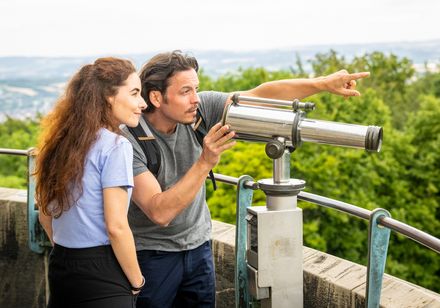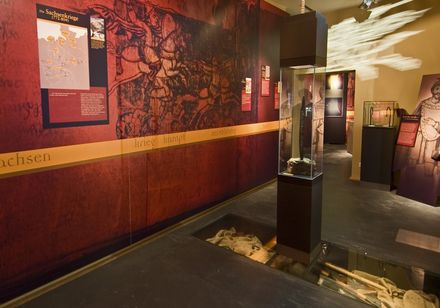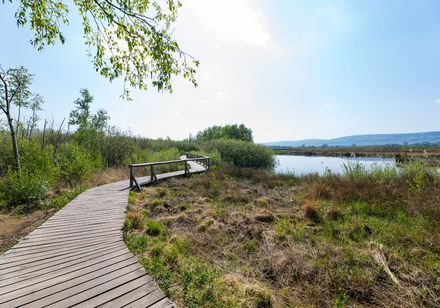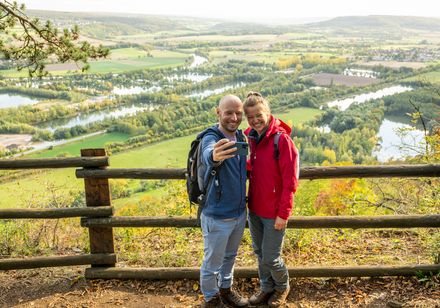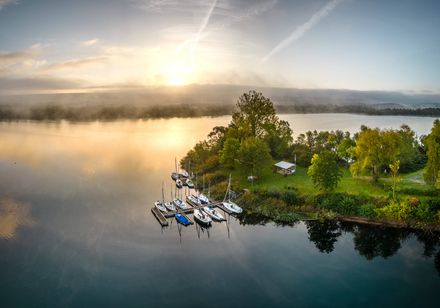The actual Krollbach reaches the western North Sea after 480 km via Haustenbach, Lippe and Rhine, while the Schwarzwasserbach reaches the central North Sea after 440 km via Hallerbach and Ems. Equipped with a picnic bench and information board, this idyllic spot invites you to take a break during a hike or cycle tour and offers the opportunity to refresh yourself in the bubbling water.
For the people of Hövelhof, however, the bifurcation has a completely different meaning:
The Schwarzwasserbach - also known as the "health stream" - was artificially canalized using a previously existing Krollbach arm and routed through the town center as a fresh water supply. Without the construction of this bifurcation in connection with the canal, further settlement would have been impossible.
Background: The northern branch of the Krollbach also used to feed the moat at the prince-bishop's hunting lodge with water and the moats continued to be maintained even after its construction in 1661. After 1800, water management was neglected, particularly in the area of the Hövelhof moat. The area of today's town center became increasingly marshy again, and the right branch of the Krollbach fell dry. The ponds and ditches turned into a breeding ground for the malaria pathogen. As a result, a devastating "swamp fever" set in at the end of the 1820s. Many Hövelhof residents fell ill and a large number died.
The restoration of the formerly functioning water management system through the Schwarzwasserbach stream and the creation of a new bifurcation at this point, in conjunction with the "health avenue" (an air corridor cut through the Hövelhof forest in 1827), was able to banish malaria once and for all.
For the people of Hövelhof, however, the bifurcation has a completely different meaning:
The Schwarzwasserbach - also known as the "health stream" - was artificially canalized using a previously existing Krollbach arm and routed through the town center as a fresh water supply. Without the construction of this bifurcation in connection with the canal, further settlement would have been impossible.
Background: The northern branch of the Krollbach also used to feed the moat at the prince-bishop's hunting lodge with water and the moats continued to be maintained even after its construction in 1661. After 1800, water management was neglected, particularly in the area of the Hövelhof moat. The area of today's town center became increasingly marshy again, and the right branch of the Krollbach fell dry. The ponds and ditches turned into a breeding ground for the malaria pathogen. As a result, a devastating "swamp fever" set in at the end of the 1820s. Many Hövelhof residents fell ill and a large number died.
The restoration of the formerly functioning water management system through the Schwarzwasserbach stream and the creation of a new bifurcation at this point, in conjunction with the "health avenue" (an air corridor cut through the Hövelhof forest in 1827), was able to banish malaria once and for all.
Nearby
